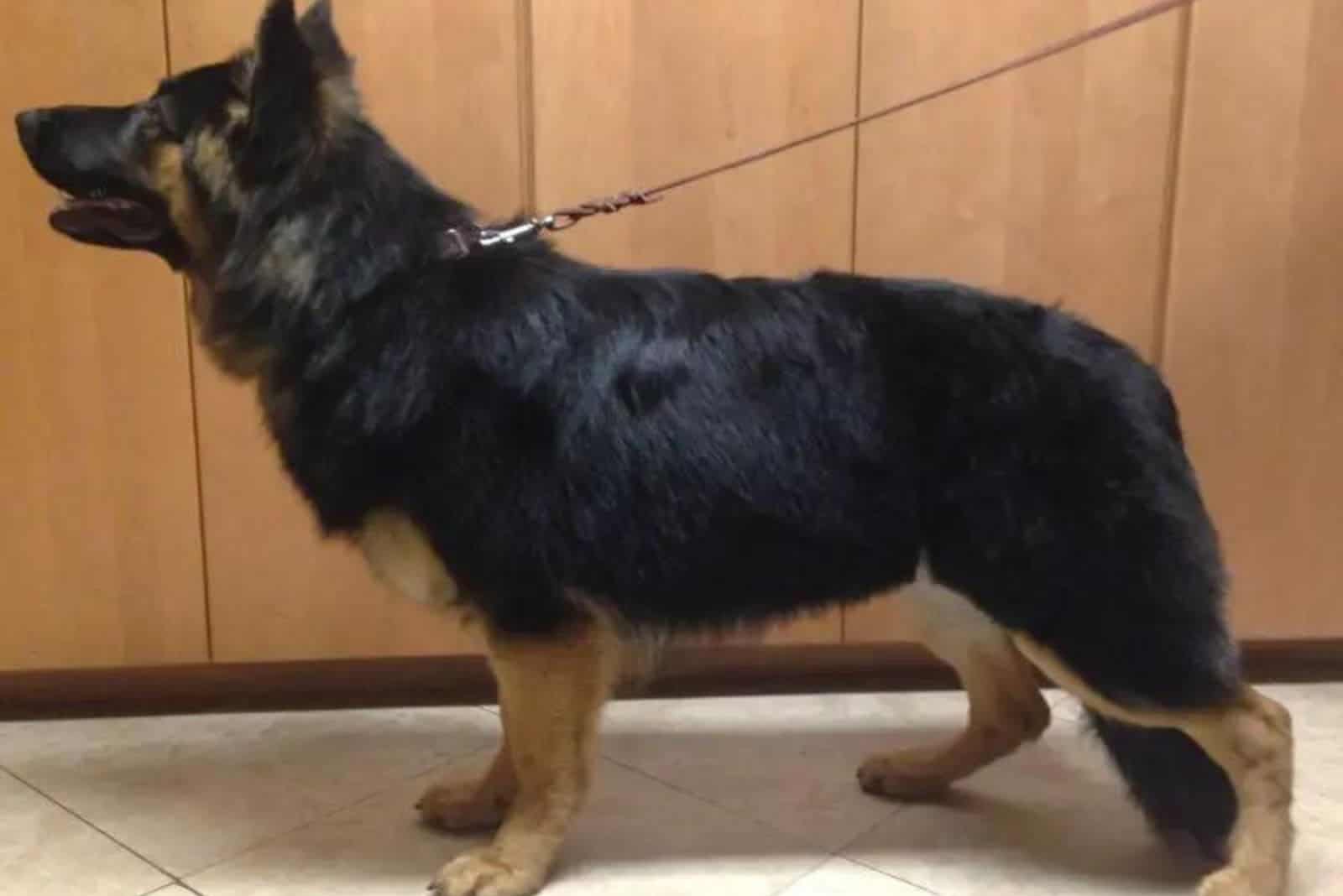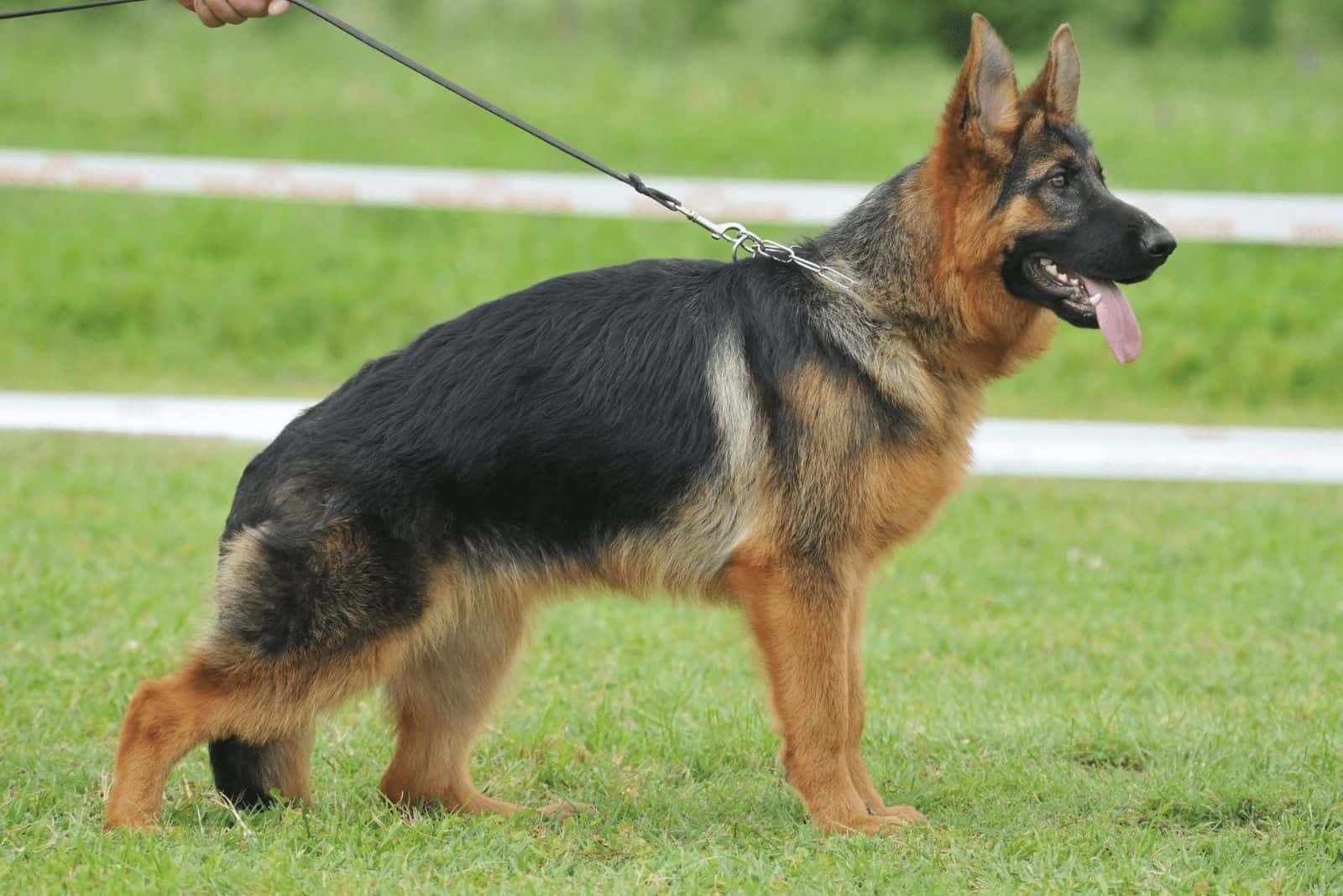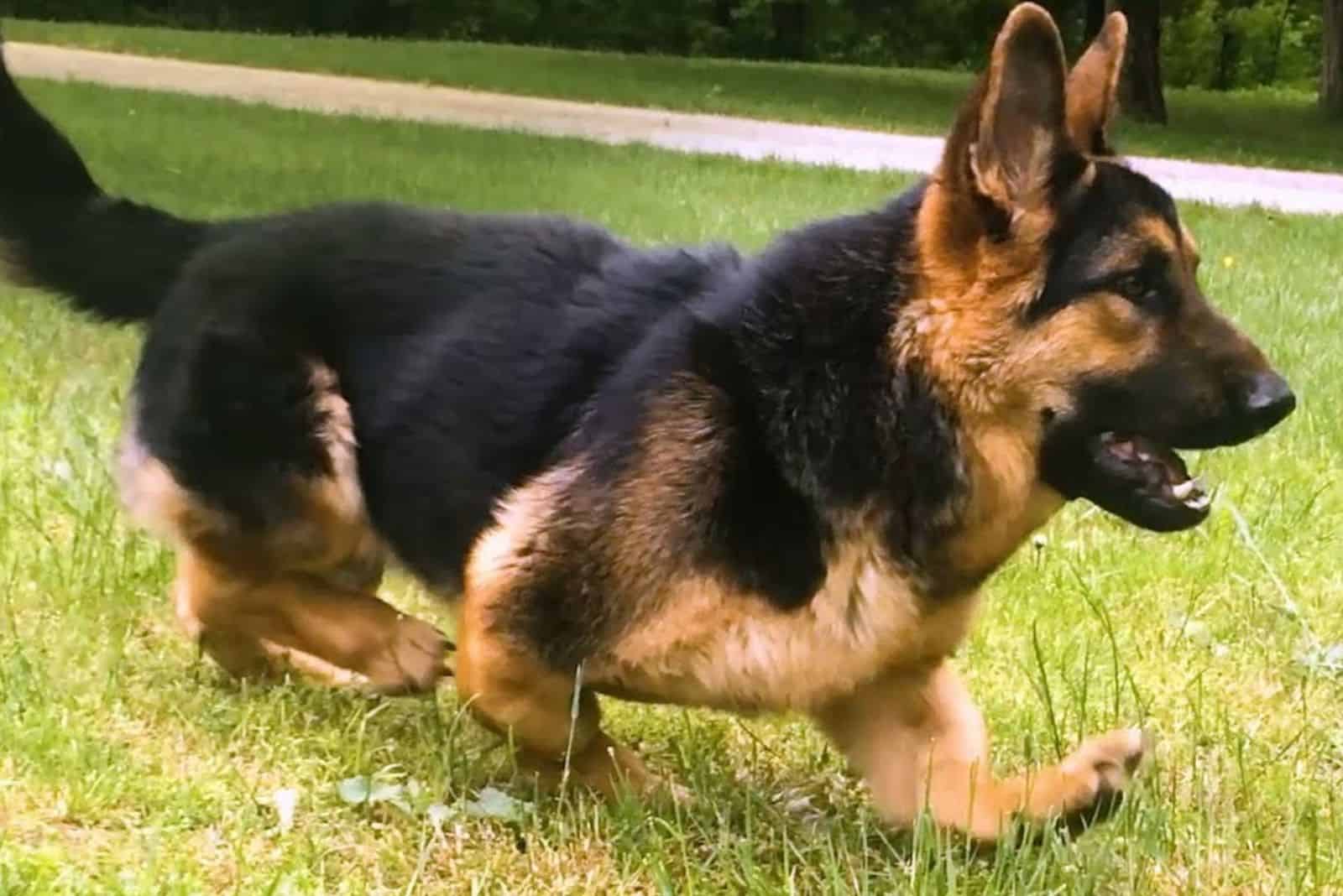I have come across many posts online where the owners of short-legged German Shepherds ask the same question: is my GSD with short legs a mix or is he a purebred?
They all describe their dogs as typical GSDs:
- Black saddle
- Long muzzle
- Pointy ears
- Medium-length coat
But… the short legs are there, too. Some post photos where we clearly see the legs are short as if the dog is a Corgi mix, and others describe their dogs as “stumpy” dogs.
Well, it’s time to answer this question.
A short-legged German Shepherd can be a purebred dog.
But, there is a catch.
Let’s talk about what a German Shepherd is, and why a short-legged one can also be a purebred GSD, as well as what it means for the owner and the plans he or she has with the dog.
The Short-Legged German Shepherd

To understand the exception, we have to know the standard looks of the German Shepherd dog. There are 7 types of this magnificent dog breed, and they all share similar characteristics:
- Height: 22 to 26 inches
- Weight: 50 to 90 pounds
- Coat: medium-length or long-haired GSD
And, to quote the American Kennel Club, desired proportions of the GSDs are: “…measured from point of chest to the rear edge of the pelvis, and from withers to ground is in the ratio of 10, to 8 and a half.”
So, the body should seem longer than taller, but the mentioned proportions should be the main goal. If you are interested in a detailed video about the AKC breed standards for German Shepherds, you can look at the official AKC videos: GSD part 1 and GSD part 2.
What Does A Short-Legged GSD Look Like?
So, now that we know the official breed standards for the German Shepherd, let’s talk about the short-legged one.
The shortness of the legs can vary. They can be as short as a Corgi’s legs or just slightly shorter than a normal GSDs legs.
If it is a purebred German Shepherd that happens to have short legs, other traits should be the same as a standard GSD:
- Medium or long-haired coat
- One of the 11 official GSD colors (plus 4 unofficial colors)
- Pointy ears
- Long muzzle
- Low-set, bushy tail
- Dark eye color (desirable)
- 50 to 90 pounds
The height is, of course, different, and it depends on how short the legs are.
If it is one of the German Shepherd mixes, the mentioned traits will change as well. Not all of them, but other dog breed traits will definitely find their way through the typical GSD’s physical traits.
For example, take a look at the German Shepherd Corgi mix: the Corman Shepherd. Or, you can skip the reading and check the picture: Corman Shepherd. You can obviously see there is another dog breed mixed with a GSD.
Here is another example: German Shepherd Beagle mix.
The same feeling that the dog is not entirely purebred can be noticed when you mix a GSD with a tall dog breed; for example, the German Shepherd Wolfhound mix or German Shepherd Great Dane mix.
How To Know It Is A Purebred Short-Legged GSD
My advice is to check the head, muzzle, ears, and chest. You can use the video of the official AKC breed standards, or you can see the written form: Full GSD Breed Standard.
Don’t pay attention to the coat color too much or the length of the fur because the coat can be fluffy, medium-length, or a long-length type.
And, even though the coat color can sometimes give us the clue it is a German Shepherd, some purebred GSDs have a solid coat color without the famous GSD black saddle on the back.
The head will be “…cleanly chiseled, strong, without coarseness.”
A long muzzle, dark eyes, and pointy ears are not erect while the dog is a puppy. The GSD’s ears start to go up on their own without cropping, and they should fully stand up when the puppy reaches the fourth or fifth month of age.
And, as for the chest, it should be deep and spacious so that there is enough space for the lungs and heart, giving the dog lots of strength and opportunity to run fast and be very playful.
Why Do Some Purebred GSDs Have Short Legs?

So, apart from the fact that dog breeders can crossbreed a purebred standard German Shepherd with a short-legged dog, making a mixed short-legged GSD, there are purebred short-legged GSDs as well.
The cause could be genes, hormones, or breeding issues.
1. Gene Aberrations
Some dogs suffer from genetic aberrations that stopped normal development, and consequently caused a short-legged dog.
These aberrations (or mutations) could have happened on any of the genes responsible for the proper development of the dog.
However, such dogs usually have other physical characteristics that stand out; for example, innate hip problems, hock pointing inward or outward, too big of head, etc.
There is no way of preventing these aberrations because they can happen in the offspring of two healthy and normal-looking GSD parents.
One thing you can do when this happens is not to breed a dog with these genetic mutations because these things are hereditary, and their offspring will likely have such mutations as well – maybe even more of them with more severe mutations.
2. Achondroplastic Dwarfism
If a German Shepherd has this type of health condition, its leg bones will simply not grow to their full and standard size.
This is a health condition common in dog breeds such as Corgis, Basset Hounds, Dachshunds, and Bulldogs.
They are not common in German Shepherds. But, veterinary medicine is just like human medicine – full of unexpected things that happen, and no one seems to know why they happen to GSDs, of all dog breeds.
Once again, if you don’t want to have more short-legged GSDs, do not breed dogs that have this type of health issue.
3. Pituitary Dwarfism
If a dog has a problem with its pituitary gland, and as a consequence, doesn’t have enough growth hormone, the outcome can be a short-legged German Shepherd.
This type of dwarfism is one that affects humans as well.
A dog with pituitary dwarfism will have a disproportionate body, with a much larger head, stumpy and short legs, and other physical traits that stand out from the breed standard.
The reasons for the lack of growth hormone that should be produced by the pituitary gland are:
- Brain tumor
- Brain injuries
- No pituitary gland (rare)
- Idiopathic
4. Unregulated Breeding Programs
Unfortunately, many times, the reason behind the short legs in German Shepherds is bad breeding or an unregulated breeding program.
The German Shepherd is a popular dog, and for a reason. But, this makes them also vulnerable to overbreeding and bad breeding programs that lead to a lot of genetic mutations and physical traits that stand out from the breed standards.
The short-legged German Shepherd is not the problem.
These dogs are normal dogs with short legs. However, who knows what happens in the back yard of any so-called dog breeder who wants to “make their own perfect GSD”.
Some of the health issues could severely impact the quality of the dog’s life.
The Conclusion
So, the clear answer is: yes, a short-legged German Shepherd can be a purebred dog, too. There are clues you can look out for to find out if the dog you have is actually a pureblooded GSD.
Or, if you want to be 100% sure, and you have the money, you can take your dog for DNA tests and find out.
But, most of us just want to know for the sake of knowing, and that’s it. We are curious, and we actually don’t care if we do have a purebred German Shepherd or a mix.
And, we truly shouldn’t care. The important thing is that our dogs are healthy and happy. As long as there are no problems with the rest of the GSDs’ health, it is alright if it has short legs.
Look at Hobbits – they saved Middle Earth! You can call your German Shepherd Frodo, my boy! Or, check some of the actually cool dog names here: 1000+ dog names.
